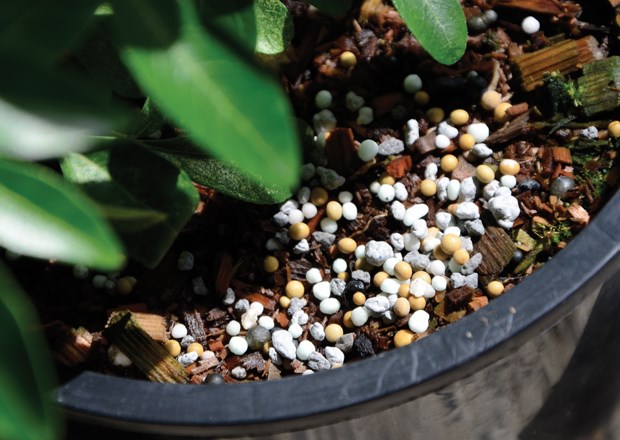The gardening myths of May are as plentiful as the weeds but, unlike weeds, myths are hard to purge.
As I see it, I have a responsibility to provide some scientific clarity to help dispel the myths of gardening. So here's my advice to help you avoid gardening myths common around this time of year.
Myth: It's spring and time to prune
Many people incorrectly believe that just as growth begins in April and May we should prune trees and shrubs to control growth. May is one of the worst times of the year to prune because the sap reserve stored in the roots during winter is just making its way up to the opening leaves. Therefore, many types of plants will bleed if pruned in May. And, when a plant bleeds it hurts and is damaged. Much of the normal pruning required in residential gardens is best done in January, February or June, July and August.
Myth: Everything is growing so it must be time to fertilize
This myth was conjured up by opportunistic marketers who realized that as people go out to work in their gardens during spring the opportunity to sell fertilizer was dramatically higher than at most other times of the year. Fertilizing, as an annual ritual, is simply an emotional need that humans externalize on their plants. Advertisers understand the psychology and take advantage, using it to sell fertilizer. Fertilizer does not necessarily make plants healthy. Only rich and diverse soil, sunshine and water can.
The only way to know if your plants have a nutrient deficiency is to learn how to diagnose foliar symptoms of nutrient problems, or to send leaf samples to a lab for analysis. Beyond the fact that over-enthusiastic fertilizing leaches millions of tonnes of excess fertilizer into our oceans each year causing aquatic dead zones, fertilizer also induces growth that's soft, making it easier for pests and diseases to attack. If your plants are growing, have a reasonably good green leaf without signs of significant malady, then fertilizer is not needed. Feeding to grow faster or bigger only leads to more pruning and more pest and disease problems. If you absolutely must fertilize hardy trees, shrubs and perennials, then late-May to early-June is the best time for the simple reason leaves and roots will then be in contact with each other and the fertilizer can actually be taken up by the roots. And, there is less rainfall in June meaning less fertilizer will be leached into rivers and oceans. You do like salmon don't you?
Myth: Always add fertilizer when planting.
It makes us feel good to fertilize at planting time doesn't it? Chemical fertilizer is addictive, easy and quick, but the normalization of fertilizer use in residential gardens and agriculture brings consequences upon our environment. New plantings need time to develop root systems capable of taking up the fertilizer, so water new plants as needed, but wait until plant roots have gone into the soil before fertilizing.
Myth: Wait to plant your annuals until the May long weekend
Nice idea, but plants don't grow according to our 12-month calendar. Annuals, hanging baskets and other tender plants can be planted out once the danger of all frost has passed and temperatures have risen sufficiently to allow growth, generally at minimum when night temperatures stabilize around 10 C. Planting out time depends on elevation above sea level, whether you're close to the ocean and whether your garden is sunny, shady, protected or exposed. Annuals and hanging baskets can be planted out anytime in late-April and early-May depending on those conditions. Always consider the long-range weather forecast before planting out annuals. Hardy trees, shrubs and perennials can be planted anytime of the year except during freezing temperatures or high summer temperatures.
Myth: The lawn is growing and needs lime
Have you tested the soil's pH? Or did you just stick your tongue in the ground and find the soil to be sour? Liming on a schedule is nothing more than proactive marketing. Test it or forget it.
Myth: Neighbourhood cats roll in my Nepeta
This is true actually, because Nepeta, or catmint, is a form of plant with a scent that is attractive to cats. This is usually not a major problem but if it persists then replacing it with a less cat-attractive plant is recommended.
Myth: A seeded lawn grows better than a sodlaid lawn
Artificial turf is better than both.
Myth: Plants are just things that grow in the yard
Well-chosen plants add definable property value, enhance the beauty of the neighbourhood and create a sense of place.
Todd Major is a journeyman horticulturist, garden designer and builder, teacher and organic advocate. [email protected]



